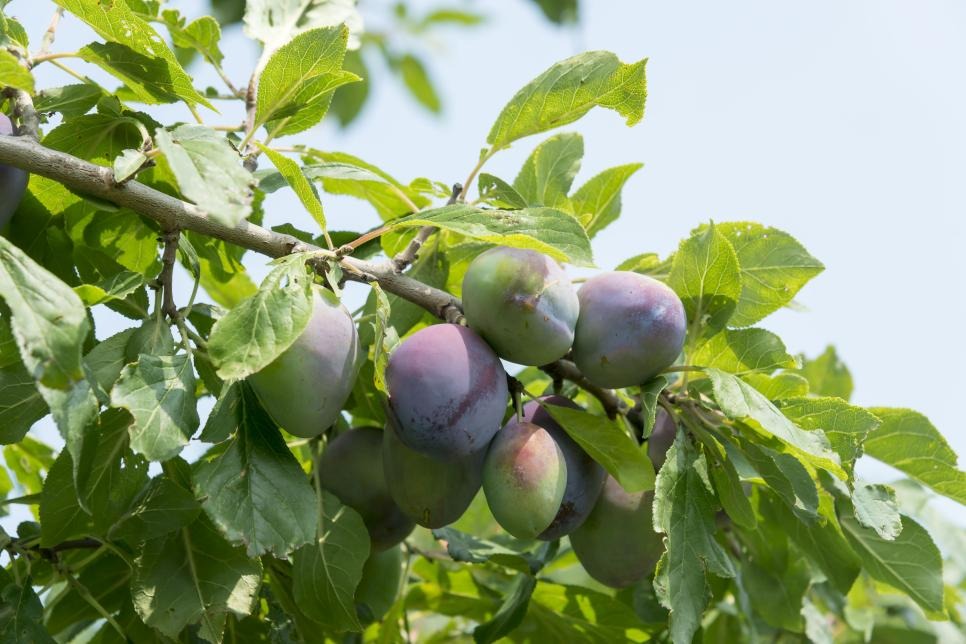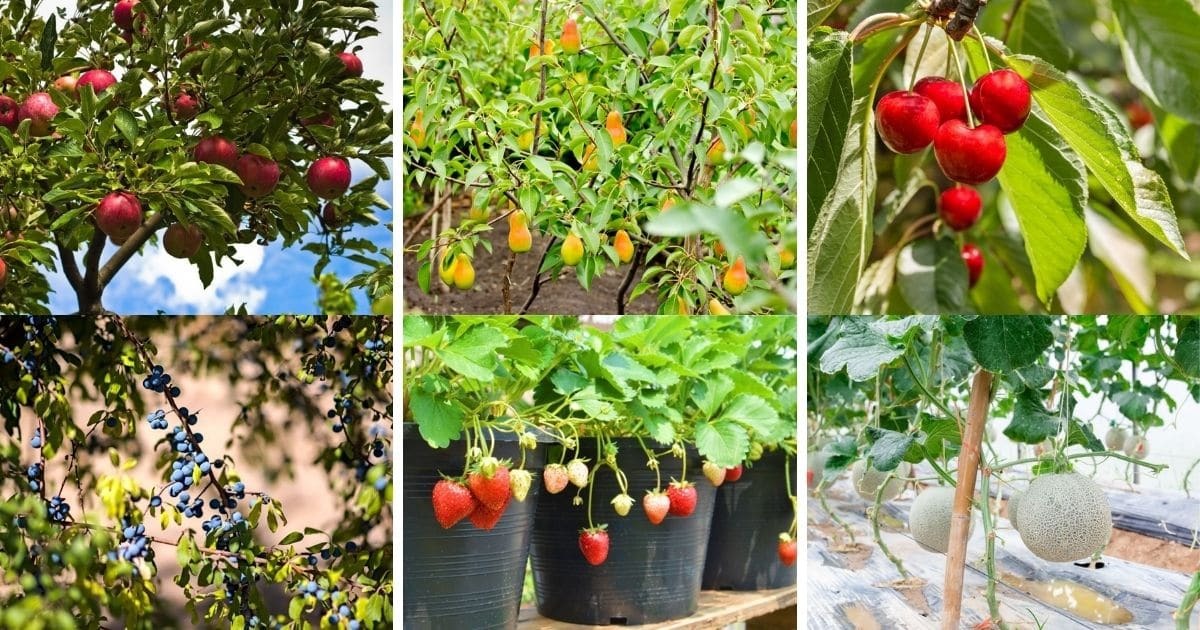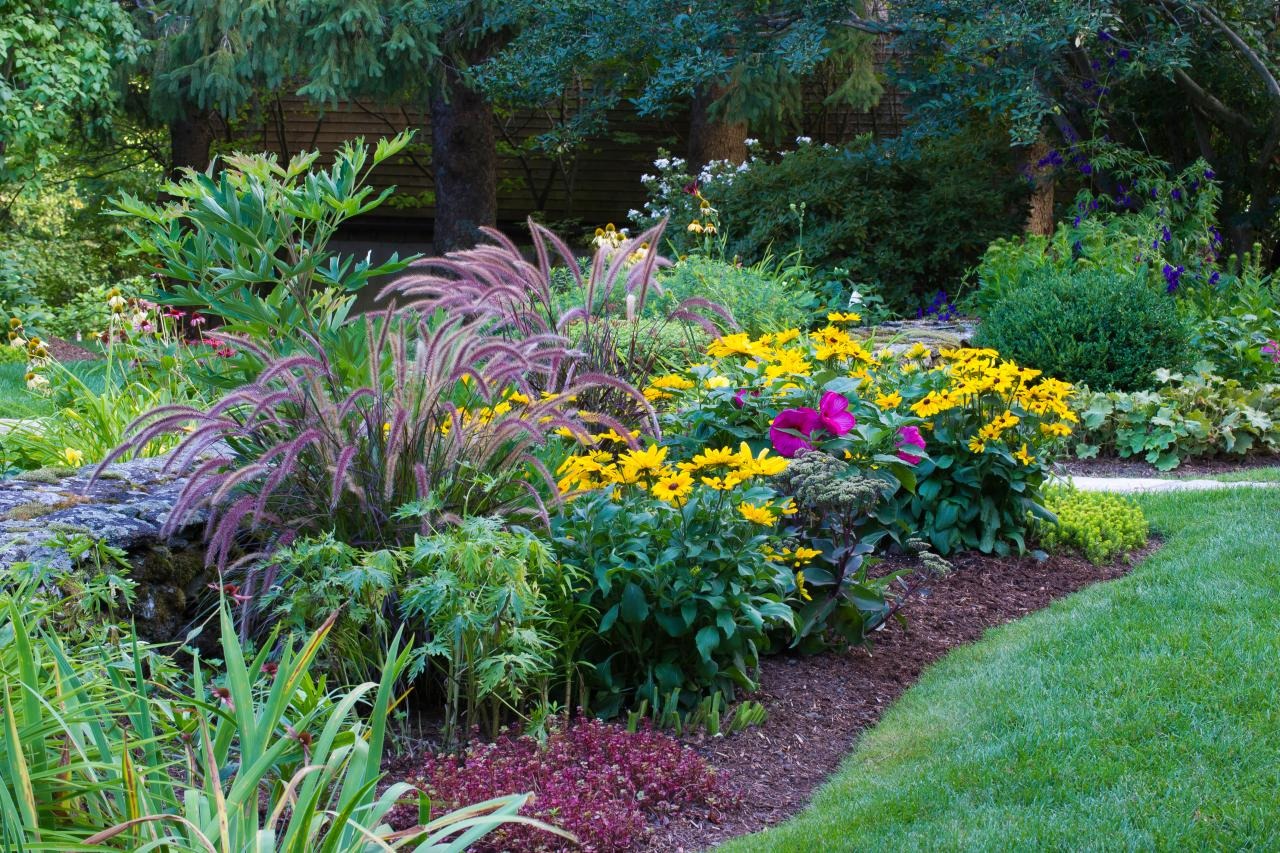The possibility of seeing your plant grow from a seedling to a mature plant old enough to bear fruit is inexplicable. Fruits are an integral part of our daily diet, and growing them in your own garden is every gardener’s dream.
Read on to learn more about the benefits of these 10 must-have fruit plants that even a gardening beginner can grow. Know your needs, such as climate, soil and other needs.
Make the most of the extra space you have to plant your favorite fruits and watch the magic happen.
1. Mango is the king of summer.
Mango, also known as Mangifera indica, has more than 100 varieties planted all over the world. Grafted mango trees can bear fruit in 3-5 years and remain in production for 40 years.
Mango trees grow best with little rain, which requires relatively low humidity during the flowering phase. During the fruiting period, harvest and harvest fruits at warm to high temperatures.
Benefits of mango:
- Treats respiratory problems
- Treats gallstones and kidney stones
- Mango leaves are very useful for treating diabetes
- Treats dysentery
- Remedy for ear pain
2. Sweet lime is the taste of a soft drink.
Sweet lime, also known as Mosambi, is a mixture of lemon and bitter orange. The plant needs a minimum of 3 to 4 years to bear fruit, depending on its growth and the time of purchase.
Mosambi plants do not require excessive watering. Watering is not necessary during the rainy season. In winter, you need to water every 3-4 days, and in summer – every day alternately. The favorite place to plant this fruit plant is a place with plenty of sun and well-drained soil.
Advantages Of Mosambi:
- Relieves constipation
- Respiratory problems
- Improves the immune system
- Urinary disorders
- Treatment of sunstroke and dehydration
- Treatment of jaundice
3. Fibrous fig tree.
In India, figs are a minor fruit crop and are usually grown in parts of Gujarat, Maharashtra, Uttar Pradesh, Tamil Nadu and Karnataka.

Fig trees usually dry out quickly and therefore require regular watering. The soil should be moist, and water clogging should be taken into account. There are five common varieties of figs: Black Mission, Cadota, Kalimyrna, Brown Turkey, Adriatic. Each species differs slightly in taste and sweetness.
Benefits of figs:
- Improves the health of the digestive system
- Improves heart health
- Cure anemia
- Prevents breast cancer
- Prevents wrinkles
4. Lakshmana Phal-Fruits with thorns.
Annona Atemoya, commonly known as Lakshman Fall, is a heart-shaped green fruit that has thorns on the outer skin. It resembles custard due to its creamy pulp with blackish-brown seeds.
This fruit plant is very easy to grow at home. They bear fruit 3-5 years after planting. Tropical and subtropical areas are the best places to grow this plant. Make sure the soil is well drained and fertile before planting.
The autumn Lakshman plant needs a lot of water throughout the summer and relatively less during the rainy and winter seasons. Grow this fruit plant in places where there is a lot of sunlight. In winter, fertilizers may be required.
Advantages of Annona Atemoya:
- Prevents leg cramps
- Prevents breast cancer
- Prevents urinary tract or urinary tract infections
- Prevents osteoporosis
- Increases endurance and energy
5. Guava Is A Tropical Fruit.
The guava plant, also known as Amrud, begins to bear fruit 3-4 years after planting. These plants grow well in places where there is a lot of sunlight and the soil is well drained.
You should avoid placing pots of fruit plants in cold areas, especially in the first 3-4 months. They can survive without water in arid areas, but it is better to water them at regular intervals.
Benefits of guava:
- Helps relieve painful symptoms of menstruation
- Improves heart health
- Benefits for your digestive system
- Helps to lose weight
- May have anti-cancer effects
6. Pineapple-The-Crown.
Pineapple plants take at least 2 years to bear fruit after planting. The plant can produce only one fruit and then die, but before dying, it also produces offspring, which takes 18 months to grow.

Pineapple plants need a lot of sun and space (3-5 ft.) for good growth. You can also increase the growth rate of pineapple seedlings by cutting the pulp at the top of the plant.
Benefits of pineapple:
- Contains antioxidants that action ailments
- Its enzymes can facilitate digestion
- Relieve the symptoms of arthritis
- Rich in nutrients
7. Dragon fruit-an inexhaustible source of antioxidants.
One of the most important reasons why you should consider growing dragon fruits at home is that dragon fruits are very expensive when bought in the market. This fruit plant can begin to bear fruit 6-8 months after planting, depending on age and size. It can bear fruit for 20-30 years.
The dragon fruit plant is a drought-tolerant plant, which means that it can grow and survive even with very little water. You can grow this fruit plant on a wide variety of soils, from sandstone to loam. However, sandy soils with good organic matter and internal drainage are best for growing them.
Benefits of dragon fruit
- It is rich in antioxidants
- Helps action chronic ailments
- Strengthens the immune system
- May increase low iron levels
- Excellent source of magnesium
8. Grapes are pearls of sweetness.
Growing vine seedlings at home is quite difficult, but if done correctly and with full knowledge of the facts, it can become your favorite weekend activity.

The four main ingredients needed to plant a grape seedling are: topsoil, cow dung powder, neem cake and peanut cake. You can find a mixture of these ingredients in the right proportions in our fertilizers section.
In the central hole it is necessary to fix the vine to support the plant. Leafy branches growing on the vine should be removed regularly.
This fruit plant needs a minimum of 3 years to bear fruit and its shelf life is 25 to 30 years. They grow best in hot summers and rainy winters.
The benefits of grapes:
- Good for heart health
- Protects against diabetes
- It contains several compounds that are beneficial for eye health
- Improves memory, attention and mood
9. The Apple Is A Sweet Savior.
The apple, also known scientifically as Malus, has many health benefits. Hence the saying: “An apple a day keeps the doctor at hand.”There are more than 7,400 varieties of apple trees in the world.
In India, apple trees are grown mainly in the northern states due to their cold climatic conditions. Temperatures below 7 degrees Celsius are the ideal temperature for a fruit plant. Extremely low temperatures can also damage the plant.
You can grow apples on many soils. However, a clay soil rich in all the necessary organic matter combined with good drainage is the best soil. Depending on the size of the apple tree, dwarf apple trees take up to 2-3 years to bear fruit, while standard-sized plants take up to 8 years.
Benefits of the apple plant:
- Increases the good HDL cholesterol level
- Reduces the risk of stroke
- Strengthens the immune function
- Moisturizes the body
- Treats muscle spasms
- Action damage caused by free radicals
10. The Jamun Tree Is The Satellite Of The Monsoons.
Jamun, also known as sizygium Cumini, is known as a slow-growing plant that is grown for decoration. It is the most common berry among all the berries on the market and it is grown mainly in summer.
Jamuna fruit plants need well-drained, nutrient-rich soil. They can easily survive in waterlogging conditions. They need a lot of sun to grow.
Jamuna plants need a lot of water for healthy growth, especially in the early stages. They require frequent watering.
Benefits of the Jamun plant:
- Improves hemoglobin levels
- Improves skin and eye health
- Keeps your heart healthy
- Prevents infection
- Strengthens gums and teeth



